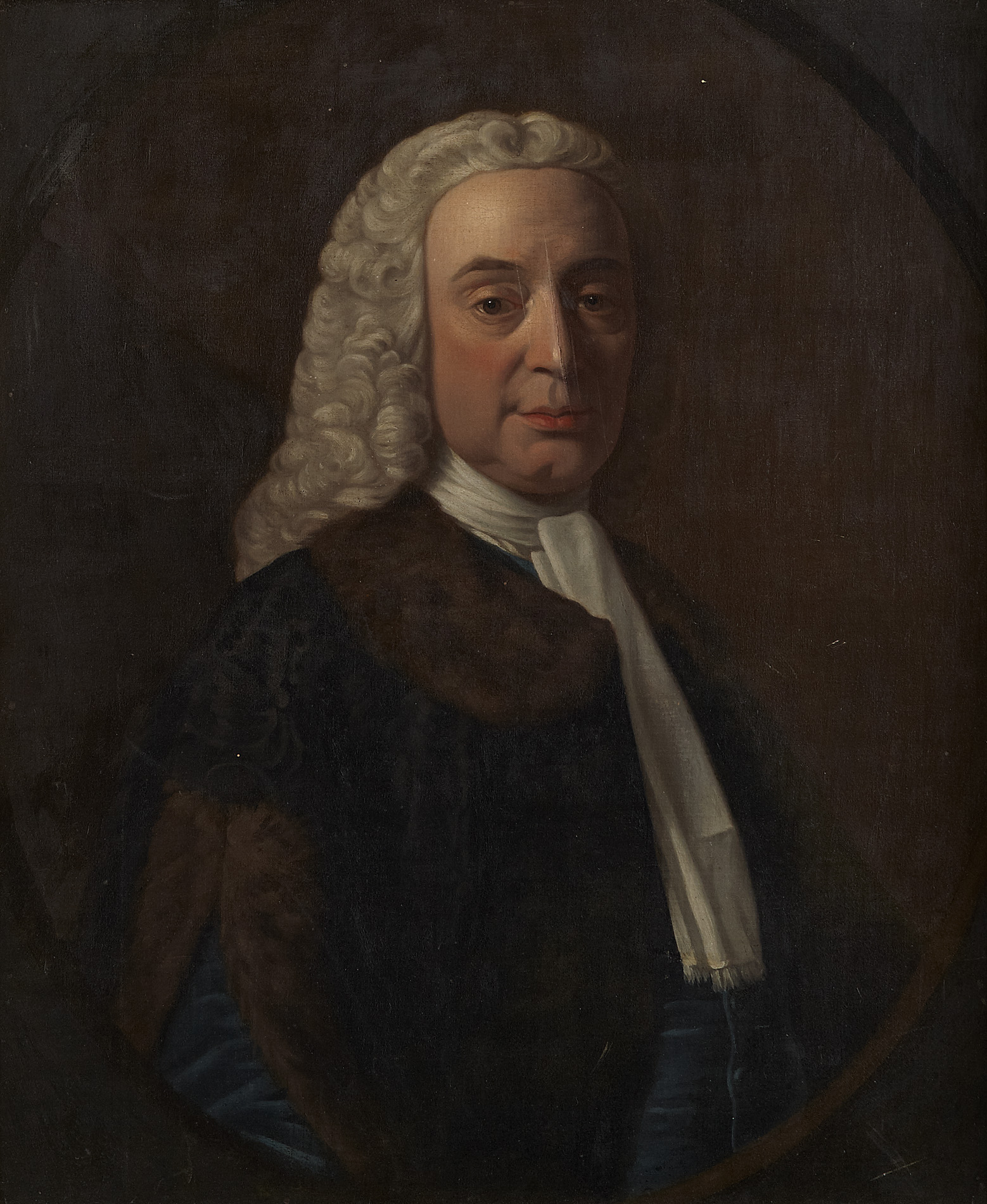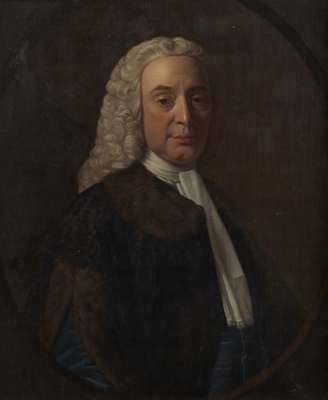
Lot 266

ANDREW MCILWRAITH (SCOTTISH FL. 1715-1753)
PORTRAIT OF JAMES KER WITH POWDERED WIG IN FEIGNED OVAL


Auction: 19 August 2013 at 15:00 BST
Description
Signed and inscribed verso 'Ja: Ker Esq. Conveener-Member of Parliament for Edinburgh - 1754, And: McIIwraith Pinxit 2', oil on canvas
Dimensions
74cm x 62cm (29 x 24 inches)
Footnote
Provenance:
By direct descent to Timothy James Kerr Bell
Sworder's (Stanstead Mountfitchet, Essex), 27th April 2010, lot 658
Notes:
James Ker is without doubt one of Edinburgh and indeed Scotland's most important and prolific goldsmiths. Working in the heart of Edinburgh's 'Golden age' he, and within partnership with his son in law William Dempster as Ker & Dempster, made some of the most important mid 18th century Scottish plate known to survive including fine bullet tea pots and ovoid coffee urns in addition to the gold Leith race prizes which bear their mark. It is obvious they held a position of power within the capital and nation's trade. Their list of clients must be considered amongst the most impressive of any Scottish goldsmiths and include the Duke of Gordon, Earl of Breadalbane, Marquess of Lothian and perhaps most importantly various members and generations of the Hopetoun family.
James Ker was born in 1700, and by the age of eight (a surprisingly young
age) was apprenticed to his father Thomas Ker, an important member of the Edinburgh goldsmiths' trade. By 1723 James was a Freeman of the city and started, what would become a prosperous, venture in his own right.
The sheer amount of silver linked his mark (and later in partnership) could only have been supported by a large workshop and it must be questioned how much of the extant silver bearing his mark was the work of his hand. None the less, the constant quality in design and manufacture is undeniable. This idea of a workshop rather than a single maker is underlined by the fact that in the aftermath of the Jacobite rebellion of 1745 he was elected Member of Parliament for Edinburgh, a position he held until 1754 when he failed to be re-elected. He was not only a political figure in Westminster but held many important positions within the Incorporation, being Deacon and member of the town council on many occasions. These commitments would have limited his time as a silversmith.
By the time of his retirement in 1763 Ker had been successful in business allowing himself to rise to the ranks of the land owning classes by
purchasing the estate of Bughtrigg (for £1500 in 1736). Ker also had a
property in Drumsheugh which was, at this time, somewhat outside Edinburgh, now all but part of the city centre. He married Elizabeth Ker daughter of Lord Charles Kerr and niece of 2nd Marquess of Lothian. This marriage no doubt confirmed his position of favour with the Lothian family but also his relationship and reputation as a goldsmith within the wider, tightly knit, upper classes of Scotland.
It seems clear that this portrait was commissioned by James Ker to immortalise his time as a Member of Parliament. It is one of two contemporary versions known (the other attributed to Allan Ramsay with the National Gallery of Scotland collection, NG1886) perhaps one each for Bughtrigg and Drumsheugh (the two pictures are numbered 1 and 2). Although the previously recorded example is attributed to Allan Ramsay both are of a similar high quality and it seems unlikely that they are by separate hands as they clearly date to the same period.
Andrew McIlwraith (fl1715-1753) while an accomplished artist with a good pedigree has left a light footprint in history. Apart from few portraits in the collection of the Earl of Stair, it is seldom pieces can be attributed to him; those than can be, are all of leading members of Scottish society.
The portrait of Bishop Burnet at Marischal College, Aberdeen is also his work.
McIlwraith was certainly acquainted with Allan Ramsay as he was a co-founder with Ramsay and others of the Academy of St. Luke, the original Scottish Academy for the Arts in 1729. He was made a Burgess of the city of Edinburgh in 1735.
Although many Scottish goldsmiths were successful and others are known to have entered the upper classes of society or business it is surprising how rare recorded portraits are. To date (including this example) only three others are recorded including the fine full sized example of Francis Howden painted when Deacon of the Incorporation (see 'Silver; Made in Scotland' G. Dalgleish and H Steuart Fothringham page 24).
For full information on the life, work and partnerships of James Ker see 'Silver Studies' The Journal of the Silver Society number 27 ' James Ker,
1700 - 1745 - Master Goldsmith and Edinburgh politician' and 28 'James Ker and Ker & Dempster, 1745-68' by Dr. W. I. Fortescue.

